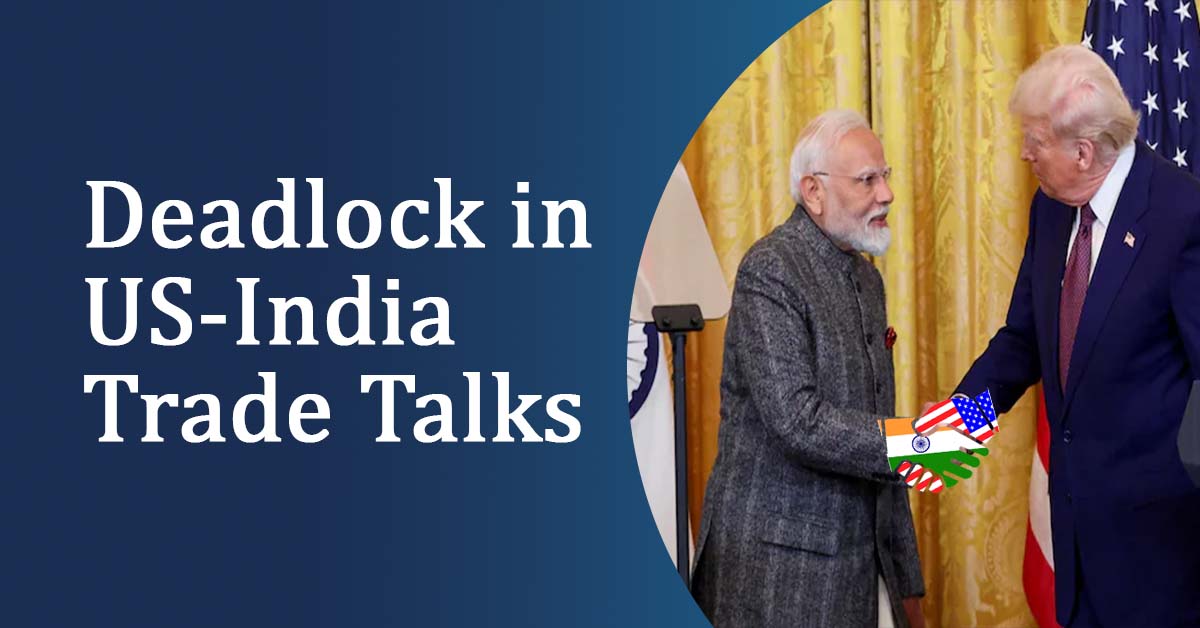
Trade negotiations between the United States and India have reached an impasse due to longstanding structural differences in tariffs, market access, and regulatory frameworks. Despite several high-level meetings in recent months, key sectors such as agriculture, dairy, automobiles, and steel remain contentious. With a July 9 tariff rollback deadline approaching—originally proposed under the Trump administration—talks have intensified but show limited signs of near-term resolution. However, both countries remain committed to a phased bilateral trade agreement under the broader “Mission 500” strategy, aiming to double trade volumes to $500 billion by 2030.
The U.S.–India trade relationship has experienced fluctuating momentum over the past decade, influenced by evolving domestic priorities, geopolitical considerations, and tariff regimes. While bilateral goods and services trade surpassed $200 billion in 2024, fundamental trade barriers persist. The Biden administration laid the foundation for a comprehensive Bilateral Trade Agreement (BTA), but progress has repeatedly accelerated and stalled due to sector-specific disputes.
In early 2025, both countries resumed formal trade talks with a renewed mandate: to achieve a standardized agreement that enhances market access without undermining domestic sensitivities. India’s Ministry of Commerce and Industry, led by Minister Piyush Goyal, has spearheaded domestic discussions to assess the implications of tariff adjustments on smallholder agriculture and strategic industries. Concurrently, the U.S. Trade Representative’s Office (USTR) has emphasized reciprocal tariff alignment and the removal of non-tariff barriers to improve market entry for U.S. dairy, farm produce, and automobiles.
Core Areas of Divergence
Agricultural Market Access
India has resisted U.S. demands for enhanced access to its dairy and agricultural markets, citing socio-economic and health concerns. U.S. negotiators have pressed for lower tariffs on almonds, wine, and poultry, but India has maintained restrictions to safeguard its fragmented agricultural supply chain and vulnerable farming communities.
Automobile and Industrial Goods
The U.S. seeks greater access for its electric vehicles and high-end automotive components, aiming to counterbalance the growing influence of Chinese supply chains in India. However, New Delhi has been reluctant to reduce its steep import duties, citing the need to protect nascent domestic EV manufacturing under its Make in India initiative.
Steel and Aluminum Tariffs
Ongoing friction over the U.S. Section 232 tariffs on Indian steel and aluminum remains unresolved. India continues to push for the restoration of Generalized System of Preferences (GSP) benefits and reciprocal tariff eliminations, without which trust in broader negotiations remains weak.
Tariff Deadline and Political Signaling
The July 9 deadline, linked to a prior reciprocal tariff agreement introduced under former President Trump, has added urgency to ongoing negotiations. While the White House has downplayed the significance of the date—calling it “not critical”—the deadline serves as a political pressure point. If no deal is reached, reciprocal tariffs on a range of Indian goods could resume, exacerbating tensions and affecting sectors such as textiles, leather, and pharmaceuticals.
Mission 500 and Future Outlook
Despite near-term obstacles, both governments have reiterated their commitment to the long-term strategic framework known as Mission 500, which seeks to double bilateral trade by 2030. The roadmap includes:
- A phased trade liberalization schedule, beginning with non-sensitive goods and progressively including services and intellectual property.
- Technical working groups to align on standards, digital trade, and regulatory coherence.
- Investment facilitation frameworks focused on critical technologies, semiconductors, and clean energy supply chains.
A limited interim agreement focused on tariff concessions and market access for select goods remains possible before year-end, depending on the outcome of current negotiations.
Conclusion
The U.S.–India trade talks underscore the complexity of aligning two large, diverse economies with distinct political economies and domestic obligations. While a breakthrough remains elusive in the short term, the geopolitical imperative of deeper economic cooperation—especially in the context of China+1 diversification—keeps the dialogue highly relevant. The focus should remain on tracking sectoral developments, evolving tariff schedules, and cross-border investment trends that will shape the eventual architecture of this emerging bilateral trade framework.
